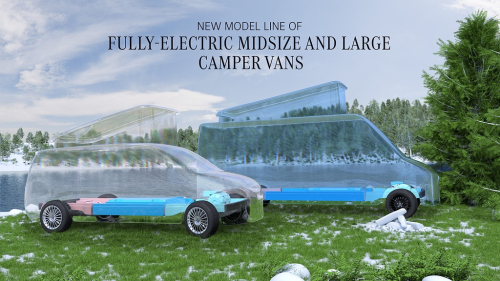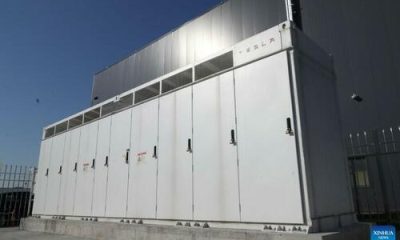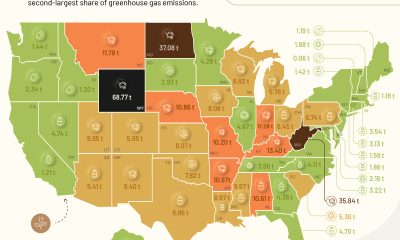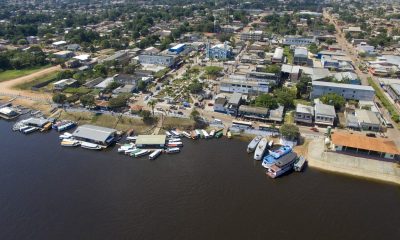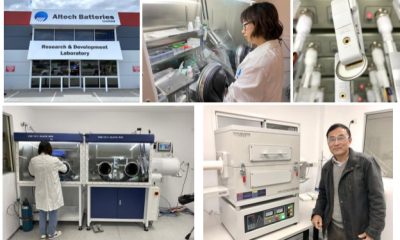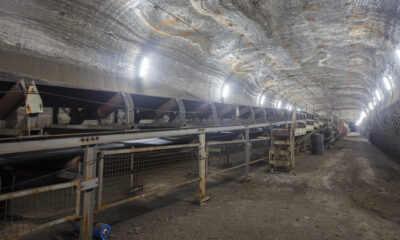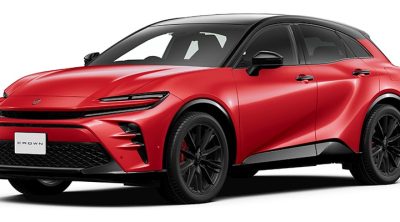Energy & Critical Metals
Mercedes-Benz announces VAN.EA electric architecture for midsize and large vans
Mercedes-Benz announced that starting in 2026, all newly developed vans from Mercedes-Benz will be based on just one single innovative, modular and scalable…
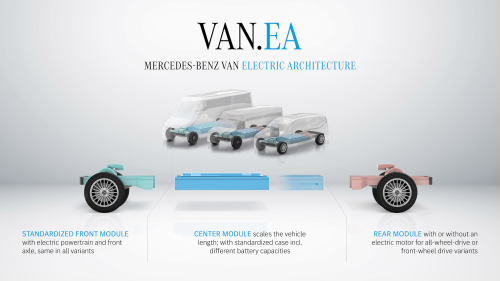
Mercedes-Benz announced that starting in 2026, all newly developed vans from Mercedes-Benz will be based on just one single innovative, modular and scalable architecture called VAN.EA, short for Van Electric Architecture. According to the “electric-only” strategy, VAN.EA has been developed from scratch as a purpose battery-electric vehicle (BEV).
All future midsize and large vans will be built on it, both commercial and private, whether in commercial use as a versatile premium all-rounder or as a private luxury van.
With the VAN.EA one architecture strategy, Mercedes‑Benz Vans will achieve a comprehensive complexity reduction in its purpose-built EV product portfolio translating into significant economies of scale. It is planned to reduce the portfolio variants by more than 50% compared to current vans with an internal combustion engine (ICE) while covering the same use cases for the customers.
With VAN.EA, Mercedes-Benz Vans focuses on efficiency and performance in every aspect of the vehicle—including aerodynamics, drivetrain, tires and chassis. The goal is to achieve a high range with an optimal battery capacity, which is directly related to vehicle weight and costs.
A modular and scalable architecture also means a high degree of scale effects as well as maximum synergies through leaner, simpler and faster processes. A maximally efficient use of resources in development as well as in production supports sustainable profitability, the company said.
The three modules of VAN.EA help to achieve these targets:
-
The front module consists of the electric powertrain and the front axle. The module is the same in all VAN.EA variants, in an optimized common parts strategy. The differentiation relevant to the customer takes place in the two other modules.
-
The center module scales the vehicle length. This is also where the standardized battery case is placed. High-voltage batteries with different capacities are installed within the case.
-
The rear module will be available in two versions: With an electric motor for the all-wheel-drive variants of VAN.EA and without electric motor for the front-wheel drive variants.
Based on these three modules, VAN.EA allows for a clear differentiation between privately and commercially used vans as well as for maximum synergies.
-
Luxury private vans (VAN.EA-P). VAN.EA-P stands for privately positioned vans in the midsize segment with a new level of luxury. With a planned range of well over 500 kilometers, it is perfectly suited for all kinds of activities, even outside cities. At market launch, SAE Level 2 automated driving will be available, SAE Level 3 is planned to be realized by end of the decade.
-
Premium commercial vans (VAN.EA-C). VAN.EA-C stands for premium commercial vans in the midsize and large segments. With its modular and scalable design, the architecture supports different configurations and upfitter solutions—from courier, express and parcel delivery (CEP) vehicles to ambulances or eGrocery vans, from municipal vans or flatbeds to lifting platforms or recreational vehicles (RV). At market launch, SAE Level 2 automated driving will be available, SAE Level 4 is planned to be realized by end of the decade to address the business potential of driverless transportation.
Mercedes-Benz Vans aims for further profitable growth in its most important regions. Today, Europe is already the strongest market with a 60% share of total sales worldwide. Mercedes‑Benz Vans wants to strengthen its position here. Looking ahead, substantial growth potential is being seen in the US for premium commercial large vans and in China for luxury private vans.
In the US, Mercedes‑Benz Vans aims to profitably and substantially increase sales by 2030 as well as to expand the portfolio by adding VAN.EA-based commercial vans to the lineup.
Both in the US and China, Mercedes-Benz Vans plans to offer VAN.EA-based private vans in a luxury positioning to cater more strongly to the expectations of its customers. In the US, Mercedes‑Benz Vans will offer for the first-time ever a privately positioned midsize luxury van.
Mercedes‑Benz Vans will also expand the portfolio of ex-factory camper vans with a new model line of fully electric midsize and large camper vans, based on VAN.EA. The division aims to define the new industry standard with its international camper business partners around the world.
The worldwide courier, express and parcel services market with an annual growth of 6‑8% per year is a strong driver for a fully electric intra- and inter-urban mobility. Mercedes-Benz Vans focuses on the upper price bands of the CEP industry, where it intends to offer a VAN.EA CEP-specific version ex-factory for the first-time.
The production network. Mercedes-Benz Vans is reorganizing the global production network with its first pure electric light commercial vehicles (eLCV) plant in Jawor, Poland. The plant aims to set new standards in terms of productivity, lean operations and sustainability for the manufacturing of premium eLCVs worldwide.
The production site for the VAN.EA-based large vans will be net carbon neutral just like all own plants of Mercedes‑Benz Vans. For the first time, Mercedes-Benz Vans plans to cover 100% of its energy needs through renewable energy.
Mercedes-Benz Vans aims for a combination of different renewable energy sources to cover the electricity and heat requirements. These are expected to include electricity from maximized use of photovoltaics, wind power and heat generation via air heat pumps, geothermal and solar thermal energy and, if necessary, as fallback in peak times, a small amount of biogas.
Additionally to the eSprinter and the Sprinter vans with ICE drivetrains, the large cab chassis based on VAN.EA will also be built in Düsseldorf, Germany. The plant in Ludwigsfelde, the second of two plants in Germany, will continue to produce Mercedes‑Benz Sprinter and Mercedes‑Benz eSprinter and will shift to become a competence center for eVan customization, for example for camper vans. In addition, Mercedes‑Benz Vans will build VAN.EA-based midsize vans in its plant in Vitoria, Spain. Other plants will follow.
Mercedes-Benz Vans has a market share of more than 20% in Europe in 2022 for electric large and midsize vans. More than 40,000 eVans have been sold already and Mercedes-Benz Vans is targeting further strong growth in the electric segment.

Uranium Exploration Company Announces Additional Staking in the Athabasca Basin
Source: Streetwise Reports 12/22/2023
Skyharbour Resources Ltd. announced an update from its Canada-based Falcon Project along with additional…
Tesla Launches New Mega Factory Project In Shanghai, Designed To Manufacture 10,000 Megapacks Per Year
Tesla Launches New Mega Factory Project In Shanghai, Designed To Manufacture 10,000 Megapacks Per Year
Tesla has launched a new mega factory…
Giving thanks and taking stock after “a remarkable year”
An end-of-year thank you to our readers, industry colleagues and advertisers before Electric Autonomy breaks from publishing until Jan. 2
The post Giving…

